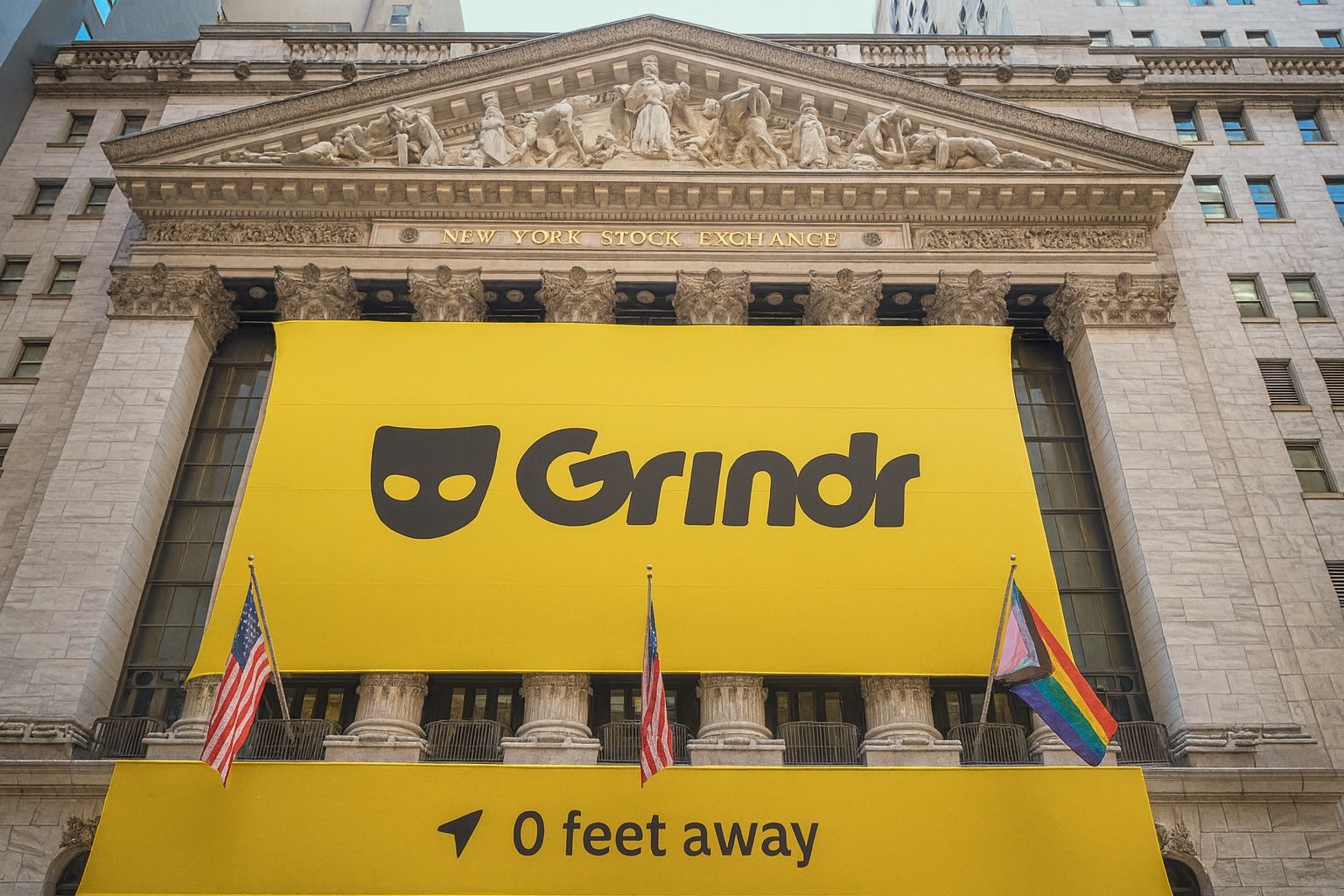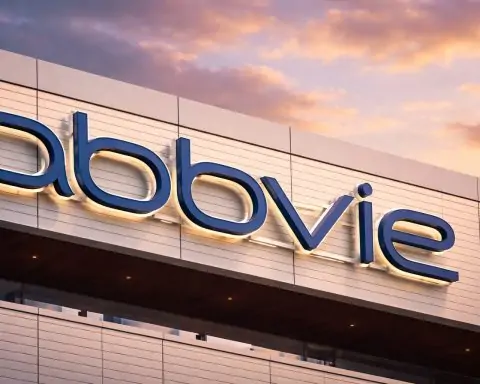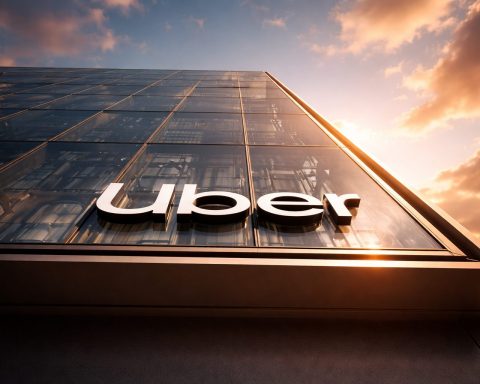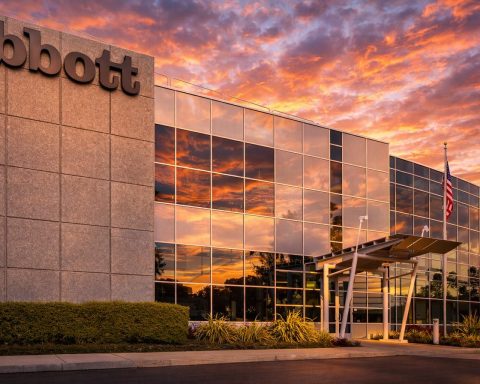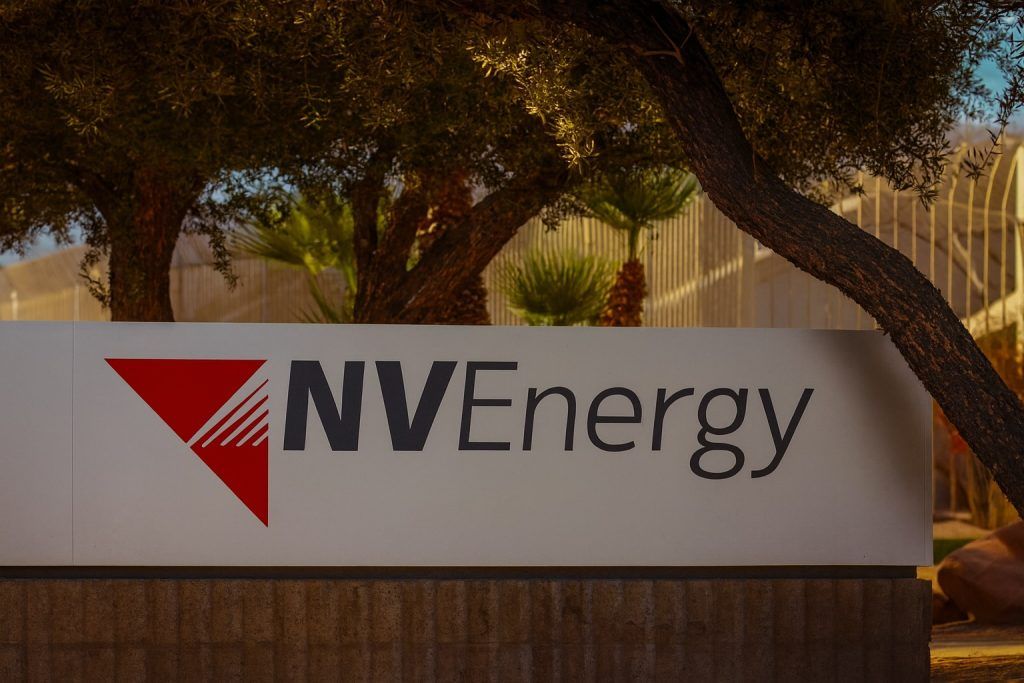- Take-Private Proposal Spurs Rally: Grindr Inc. (NYSE: GRND) shares jumped over 25% on October 24, 2025, after the company disclosed a $18 per share buyout proposal from its two largest shareholders [1] [2]. The offer represents about a 51% premium to Grindr’s stock price before buyout talks emerged [3]. Trading volume spiked (nearly 6 million shares, versus ~2.4 million average) as investors piled in on the news [4].
- Major Owners Seek Take-Private Deal:Board Chair James Lu and director Ray Zage, who together own ~60% of Grindr’s stock, delivered a non-binding proposal on Oct. 24 to acquire all remaining shares at $18 in cash [5] [6]. Grindr’s board has formed a special independent committee to evaluate the offer and any formal bids [7]. The buyers have signaled financing lined up (including a $1 billion loan and $100M in new equity) to fund the deal [8] [9].
- Stock Performance & Volatility: Even after this week’s surge to around $15–16, GRND stock remains well below its 52-week high of $25.13 [10]. The stock had slid roughly 30% year-to-date before the proposal [11], and has experienced extreme volatility since its late-2022 IPO – from an all-time high of $71.51 in Nov 2022 to a low of $4.49 in Aug 2023 [12].
- Financial Momentum (and Upcoming Earnings): Grindr is growing revenue ~25–30% annually. In Q2 2025, revenue rose 27% year-over-year to about $104 million (with $17M net income and a strong 43% EBITDA margin) [13] [14]. The company reiterated its full-year growth targets (~26% revenue growth, 43% margin) [15]. Q3 2025 results are scheduled for November 6, 2025, after market close [16], when management will update shareholders via a letter and webcast.
- Analyst Sentiment: Wall Street remains bullish on Grindr. Five analysts currently cover GRND with a “Moderate/Strong Buy” consensus rating [17]. Their average 12-month price target is ~$22–23 [18] [19]— roughly sixty-plus percent above recent trading levels, signaling expectations of substantial upside. Some analysts have trimmed targets (one to $20) after recent volatility, but most emphasize Grindr’s solid margins, double-digit growth, and niche dominance as reasons for optimism [20].
- Strategic Moves: Grindr is pursuing an ambitious strategy to become a LGBTQ+ “super-app.” The company has rolled out AI-powered features (like smarter chat recommendations and summaries) to boost engagement [21]. It’s also expanding into new verticals: launching a sexual health service for ED treatment (“Woodwork”) and plotting offerings in travel and lifestyle, aiming to leverage its loyal user base beyond dating [22] [23]. These growth initiatives underscore management’s confidence in Grindr’s future – a conviction also reflected by a $500 million share buyback program that has already repurchased $325M+ in stock [24].
- Community and Culture: With nearly 15 million monthly active users worldwide [25], Grindr is the dominant social networking app for the LGBTQ+ community. Often dubbed the “Global Gayborhood in Your Pocket,” the platform operates in 190+ countries and has become a critical space for LGBTQ+ social connection and dating [26]. Grindr emphasizes inclusivity and safety, and even runs initiatives like Grindr for Equality to support LGBTQ+ rights and health globally [27]. This cultural significance gives Grindr a unique brand value – and also draws scrutiny over how the company’s decisions (from features to policies) impact the community.
- Controversies & Watchouts: The proposed insider-led buyout is already under the microscope. At least two shareholder rights law firms (e.g. Bronstein, Gewirtz & Grossman) have announced investigations into whether Grindr’s board is acting in minority investors’ best interests regarding the $18 offer [28] [29]. Some observers note that $18 a share is below prior analyst valuations of the company, raising the question of whether the app’s long-term potential is greater than the take-private price. The company has faced other challenges too – last year Grindr saw a staff backlash when nearly half its employees quit over a return-to-office mandate [30], and earlier it had to sever ties with its Chinese owner due to U.S. national security concerns [31]. While Grindr denies any wrongdoing, a short-seller’s report in 2025 alleging inflated user metrics and a hidden SEC inquiry (claims which Grindr called false) briefly pressured the stock [32]. These incidents highlight the risks around Grindr’s governance and operations even as the company pushes forward.
Buyout Buzz Sends GRND Soaring
Grindr’s stock price skyrocketed after news of a potential insider buyout broke. On Friday, Oct. 24, GRND opened at $14.50 and surged as high as $16.22 intraday, an approximately 25% jump from the prior day’s close [33]. The rally came after Grindr confirmed that its two largest shareholders – board Chair James Fu Bin Lu and director G. Raymond Zage III – had submitted a preliminary proposal to take the company private at $18.00 per share in cash [34] [35]. By the end of the day, Grindr stock was hovering around $15.90 (up ~25.6%) on heavy volume [36], as investors digested the possibility of a buyout.
This dramatic one-day gain reversed what had been a steep downward trend for Grindr’s shares over the past several months. Prior to the buyout buzz, GRND was down roughly 20–30% in 2025 [37] [38], trading near all-time lows. In fact, the stock had languished around the $12 range this month, not far above its 52-week low of ~$11.73 [39]. The sudden takeover interest injected new optimism into the market’s view of Grindr. Traders immediately bid up the price toward the rumored deal level, betting that the offer (or a higher revised bid) could materialize and deliver a quick payoff.
Such volatility is not new for Grindr’s young stock. The company went public via a SPAC merger in November 2022, and saw an astonishing first-day pop – shares briefly hit $71.51 amid a frenzy of trading [40]. But that early euphoria quickly gave way to a harsh comedown. By August 2023, amid broader tech sell-offs and some company-specific stumbles, GRND stock had cratered to about $4.50 [41]. It recovered into the teens in 2024 and 2025, but remained volatile. This context helps explain why the $18 buyout rumor has been so catalytic: many shareholders who bought in at higher levels are eager for an exit, and the offer represents a relative premium to recent prices even if it’s a far cry from the post-IPO peak.
Majority Shareholders Propose a Take-Private Deal
The potential acquisition of Grindr is being spearheaded by Grindr’s own insiders. According to a Schedule 13D/A filing and company statements, James Lu and Raymond (“Ray”) Zage – who together beneficially own over 60% of Grindr’s outstanding shares – sent a letter on October 24 to Grindr’s board outlining their buyout proposal [42] [43]. Lu and Zage have been key figures in Grindr’s ownership since it went public; Zage is a Singapore-based investor (known for Tiga Investments) and Lu is Grindr’s board chairman. Their proposal would have an affiliated entity purchase all Grindr shares not already owned by them, effectively delisting Grindr from the NYSE and returning it to private ownership [44].
The offer price is $18.00 per share in cash, which they assert provides “significant value” to minority shareholders – roughly a 51% premium over Grindr’s stock price before their intentions became public [45]. Notably, initial reports earlier in October had suggested a lower price in the mid-$15 range was being discussed [46], so the formal $18 proposal is higher than those early talks. At $18, the deal would value Grindr around $1.5–1.8 billion (depending on shares outstanding). For context, Grindr’s market cap just before the news was about $2.4 billion at ~$12.70/share [47], implying the market had not priced in such a buyout prior to the leak.
Financing appears to be lined up for this potential acquisition. In their letter, Lu and Zage said they have “secured significant expressions of interest” for funding, including a $1.0 billion first-lien loan from investment firm Fortress and an additional $100 million in new equity capital from the buyers and affiliates [48]. Furthermore, the buyers plan to roll over their existing ~60% equity stake into the deal (rather than cashing out) [49]. Combining the debt, new cash equity, and equity rollover, they believe they can fully finance the purchase of the remaining minority shares, refinance Grindr’s debt, and cover transaction costs [50]. In short, the insiders are effectively saying: we’re committed, we have skin in the game, and we have the money ready.
Importantly, the offer is preliminary and non-binding. Lu and Zage’s letter emphasized it is an indication of interest and not a definitive agreement [51]. They requested that Grindr’s board respond by October 31, 2025 with a decision on whether to engage and grant due diligence access [52]. To handle the approach, Grindr’s Board of Directors has formed a Special Committee of independent directors (excluding Lu, Zage, and other interested parties) to evaluate any formal offer [53]. The Special Committee will have the authority to negotiate terms and ensure any deal is in the best interest of all shareholders. Grindr stated that no definitive proposal existed yet and that the board “will act in the best interests of all shareholders” as this process unfolds [54].
The proposing shareholders pitched the deal as a win-win: immediate liquidity at a premium for public investors, and a chance for Grindr to pursue long-term growth away from Wall Street’s short-term focus. “We firmly believe in the Company’s business and are not interested in selling our shares to a third party,” Lu and Zage wrote, underscoring their conviction in Grindr’s prospects [55]. In their view, taking Grindr private now would “deliver immediate and certain value” to stockholders while positioning the company for “focused growth as a private entity” [56]. They also noted they have no plans to change Grindr’s leadership or team post-deal – calling management and employees “vital” to the company’s success and pledging to keep the current leadership in place after a buyout [57] [58].
Market Reaction and Trading Activity
The market’s response to the potential buyout has been emphatic. Trading volume exploded on the news – nearly 5.9 million GRND shares changed hands on Oct. 24, more than double the typical daily volume of ~2.4 million [59]. This indicates heightened interest from traders and possibly some short-sellers scrambling to cover positions. Prior to the announcement, Grindr had a relatively small public float (since insiders hold most shares), and a modest short interest. Any hint of a take-private deal can thus cause an outsized squeeze in such stocks, and Friday’s spike may have been exacerbated by shorts closing positions to avoid getting caught in a buyout at a higher fixed price.
The price action suggests that investors are moderately confident a deal could happen, but perhaps not fully convinced $18 is the final word. Grindr stock closing around ~$15.9 is below the $18 offer, reflecting a typical “deal discount” – the spread indicating uncertainty about deal completion or the time value until closing. It’s common for an initial non-binding bid to be followed by negotiations; some bulls speculate Lu and Zage might need to sweeten the offer to satisfy the Special Committee or other shareholders. On the other hand, shares didn’t retreat anywhere near the pre-offer levels either, meaning the market sees a decent probability that Grindr will indeed be acquired (at $18 or slightly higher).
It’s worth noting this isn’t the first time in recent memory that Grindr’s stock saw a sharp move on takeover chatter. On October 15, Grindr confirmed it had received an earlier letter from the same investors about exploring a going-private deal (without a price attached at that time). The stock initially dropped 3.8% that day but rallied over 5% after-hours once the news came out, as optimism grew that a buyout might surface [60]. Those earlier talks – and reports of financing discussions – set the stage for this formal proposal. Between mid-October and now, GRND shares bounced around the low-teens, suggesting traders were in “wait-and-see” mode. The October 24 announcement appears to have validated those rumors, igniting the larger surge.
For existing Grindr shareholders, the sudden rally is a welcome respite from a difficult year. Even after climbing to the mid-teens, GRND is roughly flat versus its price 12 months ago [61] (and still well below its June 2025 highs around $24 [62]). The stock’s earlier decline in 2025 can be attributed to a mix of factors: the broader market rotation out of high-growth tech, Grindr’s own Q2 earnings miss (more on that below), and perhaps concern about user growth or competitive pressures. The buyout news has effectively put a floor under the stock for now – traders anticipate that even if Grindr remains public, the presence of motivated insider buyers will support the valuation.
However, the situation also raises the question of minority shareholder value. Some investors argue that Grindr’s true worth is higher than $18, citing its growth trajectory and unique market position. The fact that the stock was ~$24 just a few months ago in June [63] is being used as an argument that the take-private timing may be opportunistic (coming after a share price dip). On the flip side, $18 is roughly 50% above where the stock traded before Lu and Zage’s interest was known [64], delivering a quick premium to recent buyers. How the market ultimately judges this offer may depend on whether any competing bids emerge or if the Special Committee negotiates for a higher price. Given Lu and Zage already control the majority of shares, a third-party bid is less likely unless it’s significantly richer, as the insiders have indicated they are “not interested in selling” to someone else [65].
Financial Performance & Earnings Outlook
Grindr’s focus on the LGBTQ+ niche has translated into a strong, engaged user base, which the company is now monetizing through subscriptions, ads, and new services. The app’s distinct yellow mask logo is recognized by millions of users globally. [66]
Beyond the market rumors, the fundamental picture of Grindr has been one of solid growth and profitability – albeit with a few hiccups. The company’s latest reported quarter (Q2 2025) showed revenue of $104.2 million, up ~27% year-over-year [67]. This kind of growth is well above most social media or dating app peers, underlining Grindr’s success in expanding its user monetization. Most of Q2’s sales came from in-app purchases and subscriptions (about $87M) with the remainder from advertising [68]. Grindr offers premium tiers (like Grindr XTRA and Unlimited) that give users enhanced features for a monthly fee, a model that has driven steady increase in average revenue per user.
On the profitability side, Grindr is already in the black. In Q2 it recorded net income of ~$16.6 million, about $0.10 per share [69]. Adjusted EBITDA was $45.2 million, a robust 43% margin on revenue [70] – very high by tech industry standards. This reflects the capital-light nature of the business (digital service with relatively low costs once at scale). For Q2, Grindr’s earnings per share came in a penny shy of analyst expectations ($0.10 vs $0.11 forecast [71]), which caused a minor stock dip at the time. But importantly, full-year targets were reaffirmed: Grindr expects at least 26% revenue growth for 2025 with ~43% adjusted EBITDA margins, essentially maintaining the pace set in the first half [72].
The company’s financial health is strong. Free cash flow in the first half of 2025 totaled $37 million, and Grindr ended Q2 with $121 million in cash on the balance sheet [73]. Debt is moderate – after a refinancing last year, total debt is about 1.7 times EBITDA, which is very manageable for a growing firm [74]. In fact, Grindr has been using its cash to repurchase shares aggressively under a $500M buyback authorization. By September 2025, they had spent approximately $325 million buying back stock, with $175M remaining authorized through 2027 [75]. This buyback not only signals confidence from management, but it also had the effect of increasing the ownership stake of main shareholder Ray Zage (because as shares were retired, his proportional holding rose above 50% by late 2025 [76]).
Looking ahead, all eyes are on the Q3 2025 earnings, which Grindr will release on November 6, 2025 after markets close [77]. The company will post a Shareholder Letter on its IR site and host a conference call that day to discuss results and presumably address the go-private developments. This upcoming report and call could be particularly interesting: if Grindr’s performance continues strong or exceeds forecasts, it might bolster the case that the company is worth more than $18 per share, giving the Special Committee leverage to negotiate. Conversely, any slowdown in growth or user trends might reinforce the appeal of a near-term sale.
Key metrics to watch will be Grindr’s user growth and engagement (e.g. subscription counts, active user trends) and any updates on new product initiatives generating revenue. Thus far in 2025, Grindr’s growth has been driven by increased monetization of its existing user base (through higher subscription uptake and new features) more so than raw expansion of user numbers. The app’s monthly active users have been hovering in the mid-teens of millions [78]. If Grindr can show that number rising, it would counter concerns that its niche market is saturated. Also, investors will listen for commentary on how new offerings like the Grindr web client, AI enhancements, or forays into health services are contributing to the top line.
Notably, Grindr’s management (led by CEO George Arison as of 2023) has consistently talked up a 3-year strategic plan focusing on user engagement, safety, and new revenue streams [79]. In the October 15 communication responding to buyout interest, the company reaffirmed its commitment to this plan and “serving its engaged user base” even amid takeover speculation [80]. That implies that, at least publicly, Grindr is staying the course operationally – a reassuring sign that the buyout talks won’t derail day-to-day execution.
Analyst and Expert Views on GRND
Despite Grindr’s stock rollercoaster, many analysts remain upbeat about the company’s prospects. According to Reuters and analyst tracking firms, Grindr currently carries a consensus “Buy” rating – often categorized as Strong Buy – from the handful of banks and research outlets covering it [81] [82]. Price targets among analysts have ranged from about $17 on the low end to $27 at the high end [83], with an average around $22.75 per share [84]. Even the low-end targets imply the stock is at least fairly valued by the $18 bid, while the average target suggests analysts see 50–70% upside from recent prices.
For example, MP Securities recently reiterated an Outperform rating with a $23 target, and Raymond James (which has been bullish on Grindr since coverage initiation) maintained a ~$20 target in October [85]. The overarching rationale is that Grindr is a unique asset – a profitable, growing tech platform with a dominant position in its niche (LGBTQ+ dating/social) and opportunities to expand monetization further. “Wall Street hasn’t lost faith in Grindr, even with the recent volatility,” noted a Barchart analysis, highlighting that most on the Street still expect GRND to “climb well above where it trades today” [86] [87].
Some financial commentators have pointed out that the buyout buzz only reinforces their positive view. “With strong insider interest and big upside potential, Grindr could be a stock to watch closely in the weeks ahead,” wrote one market columnist, referencing the fact that insiders themselves are trying to buy the company on the cheap [88] [89]. This situation – insiders bidding for the company – often leads analysts to argue for a higher valuation. If Lu and Zage see value at $18, perhaps they believe (as their letter states) that Grindr’s future is bright, which could mean the public market is undervaluing it. It’s telling that analysts had anticipated a ~$22 stock price even before the take-private proposal emerged [90] [91].
On the other hand, a few voices urge caution. Some note that Grindr’s stock isn’t “cheap” by conventional metrics: it trades at a price-to-sales ratio around 5–7, far above the internet sector median [92]. Its price-to-earnings (P/E) multiple in the 30s is also higher than many peers [93]. These figures reflect that investors have been willing to pay a premium for Grindr’s growth and market position. If growth were to falter, the stock could be vulnerable. Additionally, the niche focus means Grindr’s total addressable market isn’t as large as, say, Tinder’s; one analyst from Citigroup (earlier this year) flagged that user growth in mature Western markets might be leveling off, putting more pressure on international expansion and new features to drive revenue.
Still, the prevailing sentiment is optimistic. Grindr has consistently beaten or met its financial guidance. Its margins and cash flow profile are strong, giving it flexibility to invest in innovation. The fact that it remains mission-driven and culturally relevant (with a loyal user base less likely to churn compared to general dating apps) is often cited as a moat. As long as Grindr continues to execute on product enhancements and user retention, analysts see a path for the company to increase monetization (through things like higher subscription uptake or new premium tiers) and thus justify valuations well north of where the stock has traded.
Strategic Initiatives and Growth Plans
Grindr is not content with just being a dating app – it’s striving to evolve into a broader digital platform for the LGBTQ+ community. In recent earnings calls and press releases, management has outlined a vision of Grindr as a “Global Gayborhood” super-app that goes beyond matchmaking [94]. What does this entail? In practice, the company is integrating new features and services that keep users engaged and address various lifestyle needs of its core audience.
A major thrust is the incorporation of artificial intelligence (AI) into the user experience. Grindr has invested in what it calls “gAI” – its in-house AI initiative – with plans for over 40 AI-driven product launches in 2025 [95]. Some early examples include “A-List,” an AI-powered feature that prioritizes high-potential chats, and smarter discovery algorithms that help users find relevant profiles more efficiently [96] [97]. There’s also mention of AI chat summarization, which could help users get gist of conversations at a glance [98]. These enhancements aim to boost user satisfaction and differentiate Grindr from other apps. By leveraging AI, Grindr can offer personalized matchmaking and content moderation (flagging bad actors or harassment) at scale – important for user safety and retention.
Beyond core app features, Grindr’s expansion plans reach into entirely new verticals. One notable venture is in the realm of health and wellness: Grindr recently launched “Woodwork,” a service that connects users with telehealth providers for erectile dysfunction treatments [99] [100]. This might seem tangential to dating at first, but management sees it as a natural extension – helping users address intimate health needs in a safe, stigma-free environment. If successful, it opens up a new revenue stream (possibly via partnerships or referral fees) and increases Grindr’s utility to its user base. Another vertical on the horizon is travel and events. Grindr has teased plans for curated travel and luxury experience offerings for LGBTQ+ travelers [101]. Given that many Grindr users connect with people in different cities and often travel for Pride events or vacations, the company could tap into that by offering travel packages, gay-friendly accommodation booking, or local guides – potentially in partnership with hospitality companies.
This super-app strategy mirrors moves seen in Asia (e.g., WeChat, which combines chat, payments, services in one app) but applied to a community-specific platform. If Grindr can pull it off, it could significantly increase the lifetime value of its users. However, these moves are not without risk. They require expertise beyond Grindr’s traditional domain and careful execution to feel authentic rather than opportunistic. The competition is also watching: mainstream dating giants like Match Group’s Tinder and Bumble might incorporate similar features for LGBTQ+ subsets of their user base, or niche rivals could emerge focusing on one vertical (for instance, a dedicated LGBTQ+ travel app). Grindr’s advantage is its strong brand loyalty and large user network, which give it a springboard to introduce new services.
Interestingly, Grindr’s aggressive growth plans come alongside some leadership updates. Effective October 1, 2025, the company welcomed a new Chief Financial Officer, John F. North [102]. A CFO change at a pivotal time could signal an intent to refine financial strategy – possibly preparing for these investments or, as some speculate, ensuring the books are in order for a potential buyout. The prior CFO’s departure wasn’t framed negatively; rather, North’s arrival is seen as adding a seasoned executive to guide Grindr through its next phase (public or private).
Grindr is also aware of the regulatory landscape and data privacy concerns that come with expanding services. Handling health information or payments, for example, raises the bar on security and compliance. The company has in the past faced questions about data security (notably, its previous Chinese ownership raised U.S. government concerns over sensitive personal data [103]). Now, as Grindr branches into new areas, it will have to maintain user trust by safeguarding data and being transparent. Thus far, there have been no major scandals since the company’s ownership shifted to U.S. hands in 2020, but any slip could attract scrutiny given the user base it caters to and the sensitive nature of dating data.
LGBTQ+ Market Influence and Social Context
Grindr occupies a singular place at the intersection of technology and LGBTQ+ culture. Launched in 2009, it was a pioneer in location-based dating apps and quickly became the go-to platform for gay, bisexual, trans, and queer people to connect. Over the years, it has grown into a community hub with over 14–15 million monthly active users globally [104] [105]. This scale – spanning nearly every country – gives Grindr a cultural reach that few niche apps can claim. In many parts of the world, Grindr is not just an app for dating; it’s a critical means of finding community, especially in regions where LGBTQ+ people lack other safe outlets.
This deep engagement and brand recognition are part of Grindr’s market value. Users often refer to checking “who’s around” on Grindr as a routine, almost like a social feed. The term “Global Gayborhood in Your Pocket™” isn’t just marketing fluff [106]; it reflects how integral the app is to LGBTQ+ social life. For investors, this means Grindr enjoys a network effect moat – new entrants find it hard to lure users away because the critical mass is on Grindr. It also allows Grindr to promote causes and awareness; the company’s Grindr for Equality initiative, for example, partners with NGOs to advance LGBTQ+ health and rights, leveraging the app to disseminate important information [107].
However, operating in this space also means Grindr is often in the spotlight of social and political discussions. The company must navigate content moderation challenges, privacy issues, and even government restrictions. (For instance, Grindr has been intermittently banned or restricted in countries with anti-LGBTQ laws.) In the U.S., Grindr recently cheered a legal victory – the Supreme Court in 2025 declined to weaken liability protections for tech platforms, a case that could have affected apps like Grindr in terms of user-posted content [108]. Such regulatory outcomes can significantly impact the business environment for social apps.
Internally, Grindr’s management has faced the task of aligning a proudly progressive user-oriented mission with the realities of running a business. A noteworthy episode was the remote work controversy in 2023: After Grindr mandated a return-to-office policy (asking remote staff to relocate or come in a few days a week), employees pushed back strongly. Approximately 80 employees – nearly half the workforce – resigned in protest of the policy, which also coincided with an effort to unionize [109]. Critics argued that a company serving a diverse community should offer flexible work arrangements, and that the move undermined employee morale and diversity. Grindr said the changes were to boost collaboration, but ultimately the incident revealed tensions between corporate strategy and the values of its talent pool. While it did not directly derail operations, such upheaval can slow product development and is something the company had to recover from over the past year.
From a market standpoint, Grindr has what some call the “rainbow economy” advantage – catering to a demographic that has high brand loyalty and distinct needs. Advertisers often covet access to Grindr’s audience, and the company’s venture into areas like health services is in part recognizing that mainstream providers often underserve LGBTQ+ consumers. If Grindr can continue to successfully marry profit motives with community trust, it stands to benefit from this loyal user base for years to come.
The Road Ahead: Deal or No Deal?
Grindr Inc. now finds itself at a crossroads of opportunity and uncertainty. The take-private proposal adds a new dimension to its story – it could mark the end of Grindr’s brief stint as a public company, or it could fizzle out, leaving Grindr to continue trading in public markets with perhaps a new valuation floor. In the coming weeks, the Special Committee will evaluate Lu and Zage’s $18 bid. Typically, such committees might hire independent financial advisors to determine a fair value range. If they deem the offer too low, they could push back for a higher price or explore alternatives. Given that the proposing shareholders already control the majority, any negotiated outcome will likely involve them (outsiders can’t easily swoop in). Minority shareholders, meanwhile, will be watching closely – and some have already lawyered up to ensure they get a fair shake [110].
From an investor perspective, even absent a buyout, Grindr’s fundamentals and niche position remain attractive. The company is profitable, growing, and innovating. It holds a leading position in a specialized market segment that has proven resilient. In an era where many tech IPOs have faltered, Grindr stands out for having positive earnings and strong margins so early in its public life. This could mean that if the take-private deal falls through, Grindr’s stock might still have upside as a standalone entity (as analysts’ targets suggest) – albeit likely with volatility. Conversely, if the deal does proceed, shareholders will want to ensure the price properly reflects Grindr’s long-term potential.
One scenario to watch is whether the initial bid sparks any incremental bids or changes. It’s not unheard of for an insider-led buyout to be sweetened after feedback; for instance, the Special Committee might negotiate up from $18 to, say, $20 to secure their recommendation. Another consideration is regulatory approval: while no antitrust issues are expected (Grindr is not being acquired by a competitor, but by existing owners), any go-private deal may still require fulfilling fiduciary duty processes and possibly a shareholder vote (where insiders would abstain, and a majority of minority shareholders might need to approve). This process could take several months, potentially into Q1 2026, and numerous things (market conditions, Grindr’s performance, financing availability) could change in the interim.
For the broader tech industry and LGBTQ+ business community, Grindr’s trajectory will be closely observed. If taken private, it might follow a trend of tech companies retreating from public markets when they feel misunderstood or undervalued by public investors. Grindr could arguably thrive outside the quarterly earnings spotlight, focusing on its three-year plan without short-term stock pressure. If it stays public, the company will need to continue proving itself to investors – executing on its expansion ideas and sustaining growth to justify a higher share price.
In any event, Grindr’s management has reassured users and investors that it’s “business as usual” on the ground. The app continues to update with new features, and community events (like Grindr’s presence at Pride festivals or its Health outreach campaigns) carry on regardless of boardroom maneuverings. Grindr’s core mission – to connect the LGBTQ+ community – remains unchanged, whether as a public or private entity. And that, ultimately, is the source of its value: an engaged, growing community that sees Grindr as an essential platform. Investors, whether public shareholders or private owners, will derive value only as long as Grindr keeps that community central to its strategy.
Sources: Recent press releases and financial filings; Reuters and Business Wire announcements on the go-private proposal and Grindr’s earnings; analysis from TS2.tech daily market reports; Seeking Alpha, Yahoo Finance and Investing.com news on Grindr’s stock surge; Barchart and TipRanks analyst summary data; Grindr Investor Relations site (user statistics and financial metrics) [111] [112] [113] [114] [115] [116].
References
1. seekingalpha.com, 2. www.barchart.com, 3. d18rn0p25nwr6d.cloudfront.net, 4. www.investing.com, 5. d18rn0p25nwr6d.cloudfront.net, 6. d18rn0p25nwr6d.cloudfront.net, 7. ts2.tech, 8. d18rn0p25nwr6d.cloudfront.net, 9. d18rn0p25nwr6d.cloudfront.net, 10. www.investing.com, 11. www.tipranks.com, 12. markets.financialcontent.com, 13. www.barchart.com, 14. www.barchart.com, 15. www.barchart.com, 16. www.fastbull.com, 17. www.barchart.com, 18. www.barchart.com, 19. stockanalysis.com, 20. www.barchart.com, 21. www.barchart.com, 22. markets.financialcontent.com, 23. www.barchart.com, 24. www.barchart.com, 25. www.fastbull.com, 26. www.fastbull.com, 27. www.fastbull.com, 28. www.fastbull.com, 29. www.fastbull.com, 30. www.latimes.com, 31. www.reuters.com, 32. www.barchart.com, 33. www.investing.com, 34. d18rn0p25nwr6d.cloudfront.net, 35. d18rn0p25nwr6d.cloudfront.net, 36. www.barchart.com, 37. www.tipranks.com, 38. www.barchart.com, 39. www.investing.com, 40. markets.financialcontent.com, 41. markets.financialcontent.com, 42. d18rn0p25nwr6d.cloudfront.net, 43. d18rn0p25nwr6d.cloudfront.net, 44. d18rn0p25nwr6d.cloudfront.net, 45. d18rn0p25nwr6d.cloudfront.net, 46. www.reuters.com, 47. www.tipranks.com, 48. d18rn0p25nwr6d.cloudfront.net, 49. d18rn0p25nwr6d.cloudfront.net, 50. d18rn0p25nwr6d.cloudfront.net, 51. d18rn0p25nwr6d.cloudfront.net, 52. d18rn0p25nwr6d.cloudfront.net, 53. ts2.tech, 54. ts2.tech, 55. d18rn0p25nwr6d.cloudfront.net, 56. d18rn0p25nwr6d.cloudfront.net, 57. d18rn0p25nwr6d.cloudfront.net, 58. d18rn0p25nwr6d.cloudfront.net, 59. www.investing.com, 60. ts2.tech, 61. www.tipranks.com, 62. www.barchart.com, 63. www.barchart.com, 64. d18rn0p25nwr6d.cloudfront.net, 65. d18rn0p25nwr6d.cloudfront.net, 66. www.fastbull.com, 67. www.barchart.com, 68. www.barchart.com, 69. www.barchart.com, 70. www.barchart.com, 71. www.barchart.com, 72. www.barchart.com, 73. www.barchart.com, 74. www.barchart.com, 75. www.barchart.com, 76. markets.financialcontent.com, 77. www.fastbull.com, 78. www.fastbull.com, 79. ts2.tech, 80. ts2.tech, 81. seekingalpha.com, 82. www.barchart.com, 83. www.marketbeat.com, 84. www.barchart.com, 85. www.barchart.com, 86. www.barchart.com, 87. www.barchart.com, 88. www.barchart.com, 89. www.barchart.com, 90. www.barchart.com, 91. www.barchart.com, 92. www.barchart.com, 93. www.barchart.com, 94. markets.financialcontent.com, 95. markets.financialcontent.com, 96. markets.financialcontent.com, 97. www.barchart.com, 98. www.barchart.com, 99. markets.financialcontent.com, 100. www.barchart.com, 101. markets.financialcontent.com, 102. markets.financialcontent.com, 103. www.reuters.com, 104. www.fastbull.com, 105. www.barchart.com, 106. www.fastbull.com, 107. www.fastbull.com, 108. www.reuters.com, 109. www.latimes.com, 110. www.fastbull.com, 111. ts2.tech, 112. www.reuters.com, 113. d18rn0p25nwr6d.cloudfront.net, 114. www.fastbull.com, 115. www.barchart.com, 116. www.barchart.com
